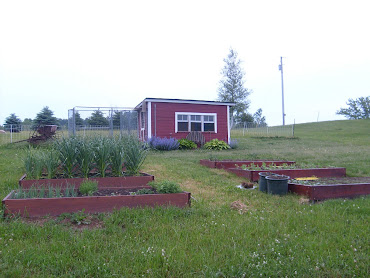The answer to the first question is easy....
Rooing is the process of removing the fleece
from the sheep by hand plucking the wool. Many Shetland sheep
retain a complete or partial tendency to shed the current year’s
fleece growth in late spring or early summer. At the point where the
fibre diameter becomes thinner and weaker, the fleece breaks quite
easily. It does not hurt the sheep when the weakened fibres are
plucked or rooed by hand.
Breeders of Shetlands will notice
that certain sheep and sometimes certain family lines have a greater
tendency to shed than others. At one end of the spectrum there are
Shetlands that shed their fleece so readily that it will be lost to
the pasture and bird nests unless the shepherd quickly and roos or
clips the sheep as soon as signs of shedding (loose tufts of wool
poking out of the fleece) appear.
Others will partially shed, leaving portions of
the fleece that must be removed by clipping. If you wait, those
parts of the fleece may shed over a period of weeks. At the other
end of the continuum, some Shetlands show no tendency to shed at all
and must be hand clipped or sheared.
An advantage to rooing a fleece is that the
previous year’s growth is removed at exactly the right point leaving
the next year’s growth rising cleanly on the sheep. Also there is
no loss in staple length or creation of short fibres as can happen
when the sheep is sheared above or below the rising new fleece. (known as "the rise")
Reference: Cathy Baker on SSI website
Here are some before, during and after photos of Anais that I took a couple weeks ago. I use a large bag for the main fleece (body, shoulders back, etc. and 2 smaller bags for the neck and britch wool. The new stand that my hubby and I built is the perfect height for me and my size of sheep, I simply love this stand. It's got a removable sides, holders on all 4 sides, plus a hoop on a pipe that can be moved anywhere on the stand. And it's aluminum, so it weights about 15 lbs. It's been a huge back saver for me this year.
 | |
| Anais had already lost a good portion of her neck wool....sigh, so here we are just getting started. |
Rooing is a lot of work, but I find it is very satisfying to be able to have this intimate and up close contact with my sheep and the wool they provide to me. I can tell you exactly how nice (or not so nice) the wool is from every part of the sheep I roo, simply because I've handled every piece of it. I also find that I will imagine in my mind what a certain sheeps' wool will be good for as I'm rooing them. If nothing else, rooing is a big learning experience for me as I'm able to attach the feel of the fleece with the micron results I review for each of the sheep in my flock.
There's also a video of our rooing on Youtube from last year's Shepherd's Harvest rooing demo.




I remember when I was a child of my dad raising sheep one year. I remember them using clippers to shear them. I especially remember making a pet out of one and my dad said that we didn't get to do it again. I loved the farm and would love to live in the country again. They say that you can move a country girl to the city, but she never gives up her country roots. Have a wonderful day. Hugs and Prayers from Your Missouri Friend.
ReplyDeleteThanks Shirley....have a wonderful day yourself!
Delete